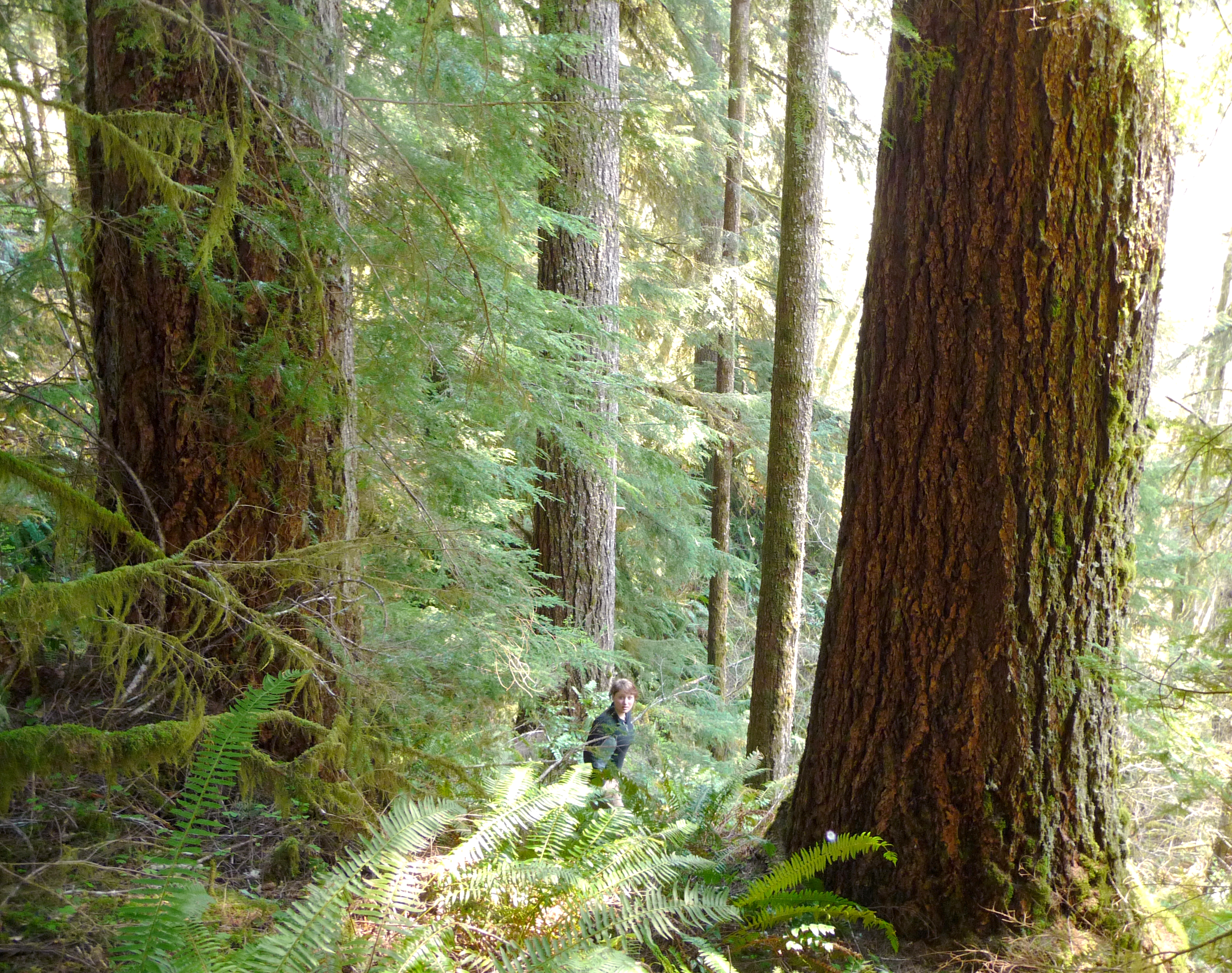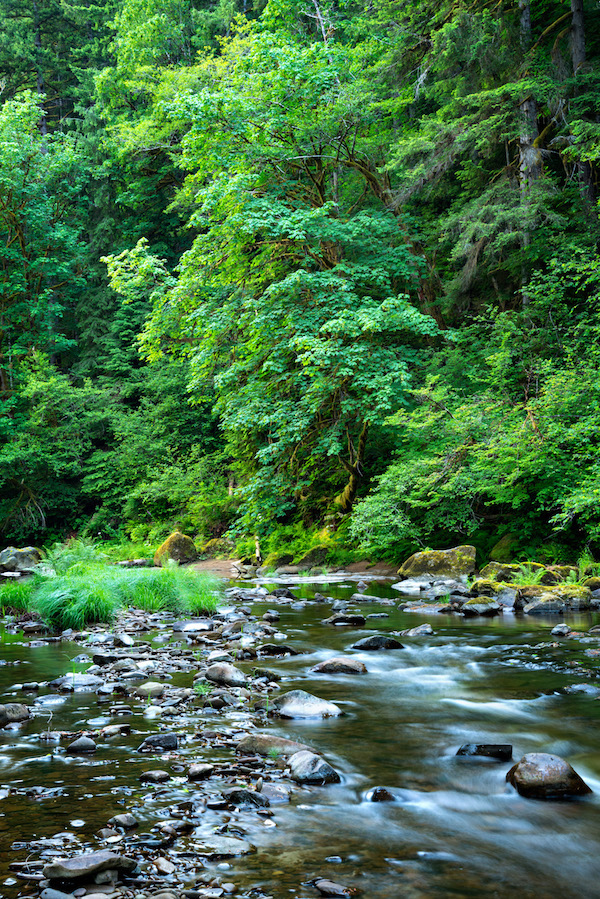
Oregon is home to approximately 821,000 acres of state-owned public forests. The vast majority of these public lands are found in the Clatsop and Tillamook State Forests in northwest Oregon, and the Elliott State Forest located east of Coos Bay.
These coastal rainforests are home to an array of imperiled fish and wildlife species, including the Oregon Coast coho salmon, marbled murrelet and northern spotted owl, and house towering conifers and a diversity of deciduous trees. Forest scientists have long concluded that these temperate rainforests sequester and store incredible amounts of carbon from the atmosphere, thereby mitigating global climate change. These forests are an essential buffer against the worst impacts of climate change — if they remain standing.
After the Tillamook Burn — which was a series of wildfires starting in 1933 — the state took over management of these North Coast forests from various counties, and timber receipts from logging continue to support county services like schools, roads and libraries. The state of Oregon’s clearcut logging on the Clatsop and Tillamook State Forests to fund county services has been so destructive to the environment, that in 2018 Cascadia Wildlands joined conservation partners the Center for Biological Diversity and Native Fish Society in bringing a lawsuit against the state of Oregon for violating the federal Endangered Species Act pertaining to Oregon Coast coho salmon. We have since reached a settlement that greatly increases stream buffers and will help reduce landslide and sedimentation risks.
To the south, the Elliott State Forest was historically logged to fund public K-12 schools. Cascadia Wildlands determined in the early 2000s that this forest was where some of the worst old-growth clearcutting was taking place on public land in the region, and took action through grassroots organizing and a series of successful litigation efforts. In 2022, we helped pass SB 1546 to create the Elliott State Research Forest, which appropriated the remaining $121 million to fully decouple the Elliott from the Common School Fund. This legislation will keep the forest in public ownership, meaningfully incorporate tribal involvement and the application of traditional ecological knowledge, increase streamside protections to benefit salmonids, and protect its stately, old-growth forests to help recover the threatened marbled murrelet, northern spotted owl and other species on the brink of extinction.
Western Oregon’s state forest system has the ability to anchor imperiled species recovery and store significant amounts of carbon to mitigate climate change, and Cascadia Wildlands will continue to advocate for these values as forest policy conversations are advanced.
Monitoring Federal Forests
Since the 1920s, clearcut logging on public forests managed by the Forest Service and Bureau of Land Management has been widespread. The unsustainable amount of clearcut logging perpetuated the boom and bust economic cycles in many rural communities in Oregon. It also wreaked havoc on populations of fish and wildlife and shrank Oregon’s wildlands, harming opportunities for hiking, fishing, nature photography and other activities. Over 90% of Oregon’s old-growth forests were logged, and species like the northern spotted owl, marbled murrelet, and Coho salmon were driven toward extinction.
In response to these concerns and public outrage over the loss of old-growth forests, federal land managers and a team of 600 specialists developed the Northwest Forest Plan (NWFP), which was officially adopted in 1994. This forest plan governs logging across both Bureau of Land Management and Forest Service managed lands from northern California north to the Canadian border to this day.
While the Northwest Forest Plan was an admission that past logging was unsustainable and generally was aimed at protecting what little old forest remained, it did permit continued logging of mature and old-growth forests and largely omitted important considerations of climate, carbon storage, and recreation. Cascadia Wildlands has prioritized challenging site-specific timber sales authorized under the Northwest Forest Plan that target remaining mature and old-growth forests or compromise rural communities.
While the specific individual timber sales being challenged are ever changing, check out Cascadia Wildlands’ successful efforts to stop the Flat Country timber sale in the headwaters of the McKenzie River. Gathering on-the-ground data and organizing grassroots opposition in combination with detailed administrative and legal work has proven a winning combination to push back on controversial projects.
For up to date information and opportunities for involvement sign up for our e-news and join our WildCat volunteer crew!
While the Northwest Forest Plan still applies to all U.S. Forest Service lands, the agencies have begun the slow process of revising that land management plan. In 2017, Cascadia Wildlands participated in the agency’s development of a “science synthesis,” a compilation of the latest and best available science and research today pertaining to forest ecology and its various offshoots. Cascadia will be monitoring and influencing these revision efforts. Please sign up for our e-news updates to receive up to date information and opportunities to weigh in.
For two decades, commercial logging interests and the Bureau of Land Management have been working together to increase logging levels and withdraw its lands from the Northwest Forest Plan. In 2016, the BLM released a revised management plan aimed at drastically reducing forest protections and increasing logging levels. Specifically, this plan aimed to increase logging in areas next to streams and rivers and in forests just beginning to mature into suitable habitat for threatened and endangered species, generally between 80 and 140 years in age. Overall, the plan would increase logging levels by 37%. Cascadia Wildlands and our partners challenged this revised plan in court, but our challenge was unfortunately rejected by the Ninth Circuit.
For more detail and background on BLM forests in Oregon click here.
The Bureau of Land Management has since proposed projects under the 2016 plan, and as feared, they target much-loved mature and old-growth forests. Cascadia Wildlands stepped up to challenge these projects. The individual logging projects being challenged change frequently and are numerous, but an early example is our successful cases against the Thurston Hills timber sale. If you are interested in getting involved in our efforts to field check, monitor, comment on, and litigate these projects, please join our WildCat team!

